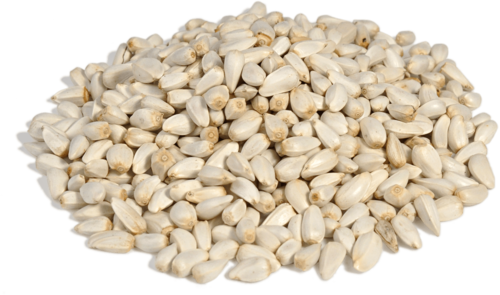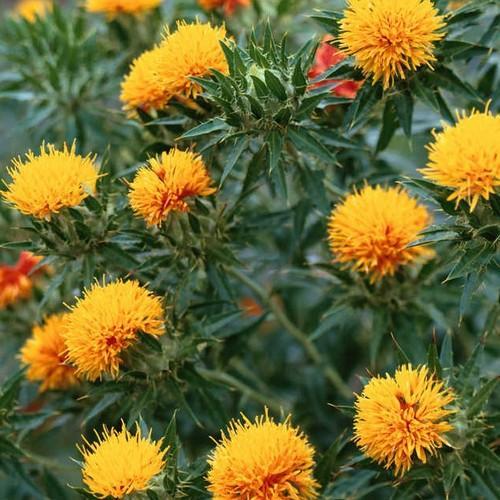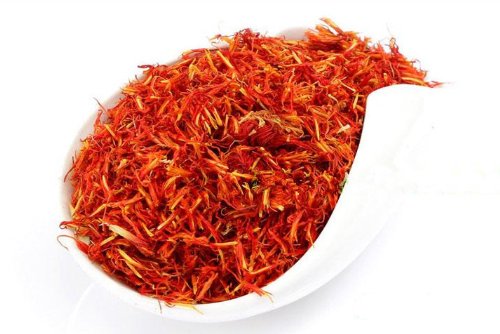Safflower is a versatile herb that has many names including Alazor, American Saffron, Benibana, and Chimichanga. It is famous for its safflower oil that is expensive and used to cure a lot of health problems including obesity and overweight. Learning how to grow Safflower is easy. All you need to do is to follow the instructions provided in this article.
But before learning how to grow safflower, there is a few information you need to know about this plant first. It is an annual plant that grows best in dry gardens. It can grow up to 1 meter tall. It is also has a sturdy stem that is difficult to break.
It is also a healthy herb. Its seeds are edible and they are rich in fatty acids that is why its flowers are popular for bees. It is also used for dying fabric and edible garnish. If you are looking forward to learning how to grow safflower, just follow the below guide.
1. Soil
Safflower can’t be grown in any soil, it needs a deep, fertile well-drained soil. If your soil is heavy and rich in clay, you will need to amend it. It also does not like sandy soil, it is preferable that you add moss and compost to your soil if it is sandy. In brief, soil cultivation is necessary to grow safflower.
2. Location
Choosing the right spot for growing safflower is easy. There is only one rule. Always opt for the sunniest spot in your garden. This herb likes dry warm locations. You should keep in mind that any location you choose for this herb is permanent. You can’t transplant safflower.
3. Planting

Safflower is one of the plants that require direct seedings. This plant does not like transplanting so you will have to propagate it from seeds. The temperature of the soil needs to be between 60-70F for the seeds to germinate.
Before sowing the seeds, make sure that you cultivate the soil well. You should also remove any stones or derbis around the location you chose. If you think you have a poor-quality soil, you could improve it by adding manure or compost.
It is advisable that you keep a space 30 cm in all directions between each seed. This technique will later prevent your plants from spreading diseases to each other. Now that everything is set, sow the seeds 2 to 3 cm deep.
After sowing the seeds, cover them with soil and water them slowly and carefully. Don’t flood them with water as it may wash the seeds away. During the first 3 to 4 weeks, make sure you keep the soil moist, it will help the seeds to germinate.
4. watering
When watering safflower, you need to be careful not to over water it. Soggy water will cause fungal diseases and rotten its roots. It is advisable not to water from above because wetting the foliage promotes diseases.
5. Fertilizing
Safflower needs a high nitrogen and phosphorus fertilizer. However, it is highly recommended that you test your soil before applying the fertilizer. Don’t start fertilizing until your soil starts to show low levels of nitrogen.
6. Pests and diseases
As we mentioned above, the biggest danger to safflower is moisture. Moisture rotten the roots of the plants which will eventually hinder its growth if not killing it. Therefore, again, you should water your herb only when it needs to. Safflower could also face many harmful diseases and pets including safflower rust, bacterial blight, and aphids, leaf-eating caterpillar and safflower fly.
7. Harvesting
You will know when to harvest this herb from its color. When this plant becomes brown, it means that it is mature enough to be harvested. Harvesting safflower is easy, you will only need to cut the seed heads and shake them into a bag or a container. You should store them in an airtight area. They don’t like humidity, therefore, they require a cool place.
You can also eat safflower petals. They are mainly and widely used in adding color to food. You can harvest safflower petals when you can see that the flowers are open. You could either cut the whole flower or just remove the petals. Either way, try not to break the stem.
These are the easiest and the most effective steps to grow safflower. Just follow these steps and you will grow safflower successfully. It is not difficult to grow it and it is a highly recommended plant because of its many medical and healthy uses.
If you wish to grow healthy herbs, perhaps you should consider growing betel leaf. For further choices, check out these amazing herbs that can be easily grown.
Enjoying growing your herbs and if you ever needed any advice, please don’t hesitate to contact us.



